While children in Greece traditionally open gifts on January 1st, delivered by Aghios Vasileios (Saint Basil of Caesarea, AD 330-379), the western European-North American tradition of Santa Claus, appearing as a jolly, kindhearted man delivering presents on Christmas Eve, has become increasingly popular in Greek households in recent years. As a result, children often receive gifts on both dates, with many mistakenly conflating the two similar, albeit distinct, traditions.
As we edge ever closer to Christmas, we explore the story of Saint Nicholas the Wonderworker, the man behind the magical story of Santa Claus. Venerated in all Christian denominations, his remarkable life, marked by selfless generosity, compassion, and secret gift-giving, has become synonymous with the spirit of Christmas. But did you know that the historical Saint Nicholas, who served as an early Christian bishop in the late 3rd-early 4th century, was Greek?
To understand the history of “Saint Nick,” we must delve into the story of his early life, his travels and legendary acts of kindness, and the development of the Santa Claus tradition that we all know and love today. We also explore what happened to his relics after his death, and where you can visit them, as well as his enduring legacy in Greece.
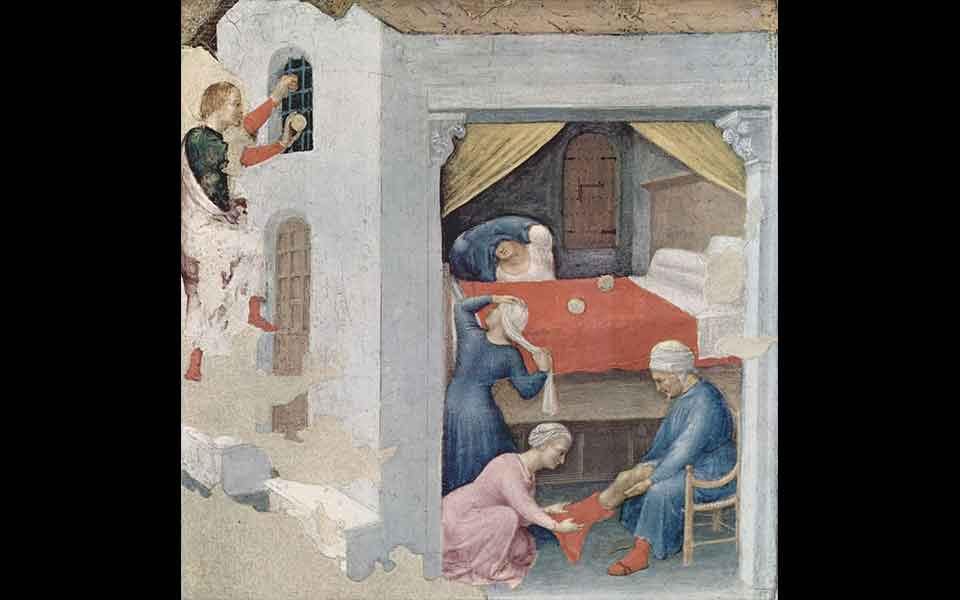
© Public domain
Secret Gift-Giver
The story of Saint Nicholas begins in AD 270, in the Greek seaport of Patara in Lycia, a flourishing maritime and commercial city on the southwest coast of Asia Minor. While very few contemporary sources about Nicholas’ life have survived, scholars agree that he was born to wealthy Greek Christian parents, and that he inherited a significant fortune upon their untimely death during an epidemic.
Guided by his devout Christian faith, and obeying the words of Jesus to “sell what you own and give the money to the poor,” the young Nicolas decided to dedicate his life to helping the needy. One of the most famous tales, attested in Michael the Archimandrite’s (AD 814-842) “Life of Saint Nicholas,” recounts his assistance to a poor man with three daughters. Lacking dowries, the daughters faced the prospect of a life of slavery or prostitution. In the dead of night, Nicholas anonymously provided bags of gold for each daughter, ensuring their marriage, and saving them from a dire fate.
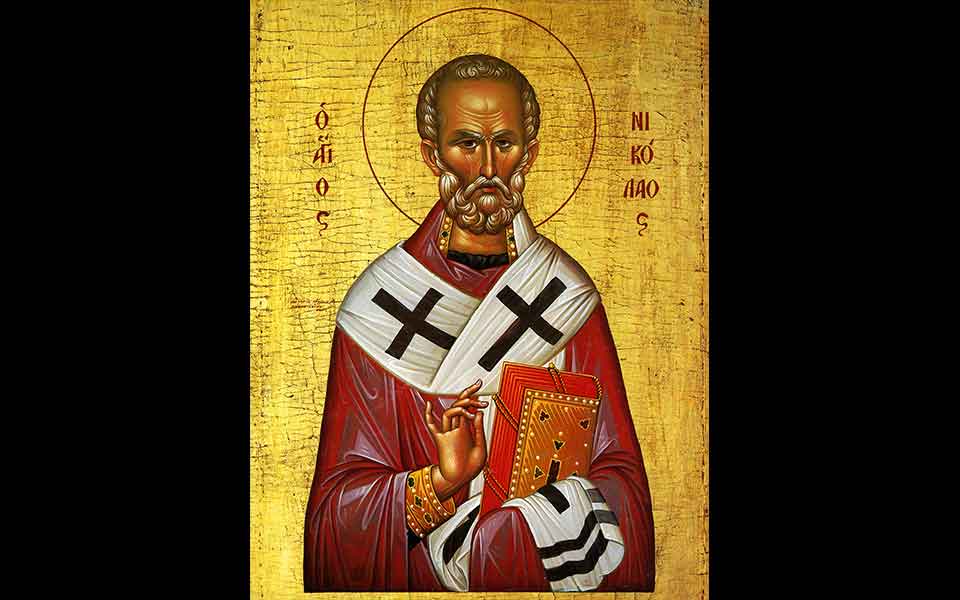
© Shutterstock
According to tradition, the bags were tossed through an open window, landing in stockings or open shoes left by the fireplace – hence the custom of children hanging stockings at the end of their beds on Christmas Eve.
While the historicity of this incident is disputed, the story of Nicholas’ secret gift-giving nevertheless became a hugely popular theme in Christian devotional art in the Middle Ages, appearing in numerous icons and frescoes across Europe. In these depictions, he is often shown wearing a cowl, a long, hooded garment, with wide sleeves, typically worn by monks, climbing through the window of the house where the three daughters are fast asleep.
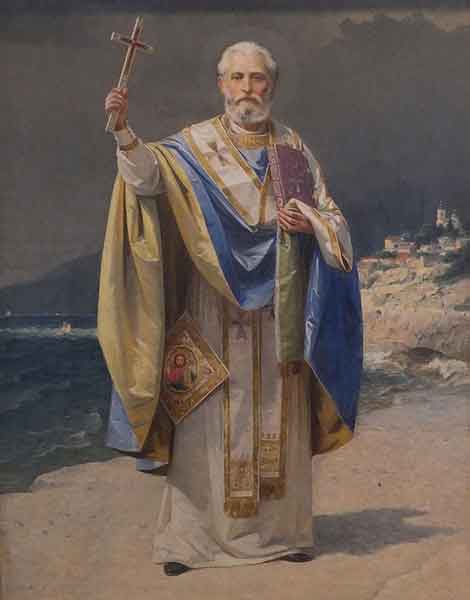
© Public domain
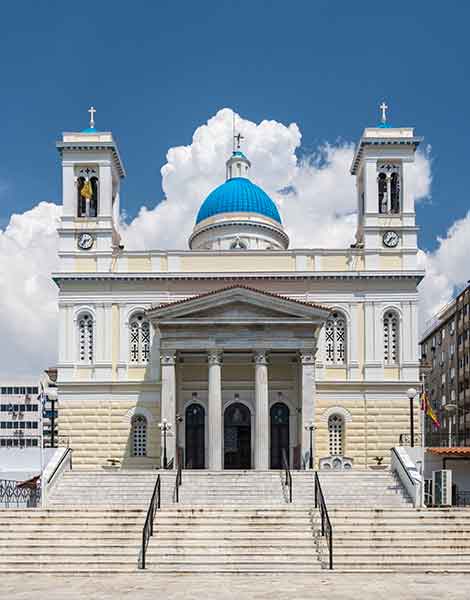
© Public domain
A Christianized Version of Poseidon
It is widely believed that Nicholas, from his home in Myra, the capital city of the Greek-speaking Roman province of Lyica, went on a pilgrimage to the Holy Land at some point in his early life. There he sought to experience the life of Jesus and gain spiritual insight of His passion and resurrection. During the return voyage, as Nicholas’ ship navigated the perilous waters along the south coast Asia Minor, a terrible storm gathered on the horizon. As the rough sea threatened to capsize the ship, he was said to have rebuked the storm, saving the vessel and the lives of all those onboard.
This miraculous intervention, and many others that took place during and after his lifetime, established Nicholas as the patron saint of sailors and fishermen. Indeed, the reverence for Saint Nicholas among sailors and seafaring folk grew over the centuries, as coastal communities across the Christian world, and especially here in Greece, adopted him as their primary saint.
As the tradition took on its own distinct character in Greece, Nicholas became known as the “Lord of the Sea,” described by many as a Christianized version of the pagan sea god, Poseidon. Travel to just about any coastal town or village in Greece, and there will be a church or small chapel dedicated to him, usually in close proximity to a port or anchorage. One of the most famous examples is the spectacular, blue-domed Church of Aghios Nikolaos in the heart of Piraeus, the port city of Athens, completed in 1902.
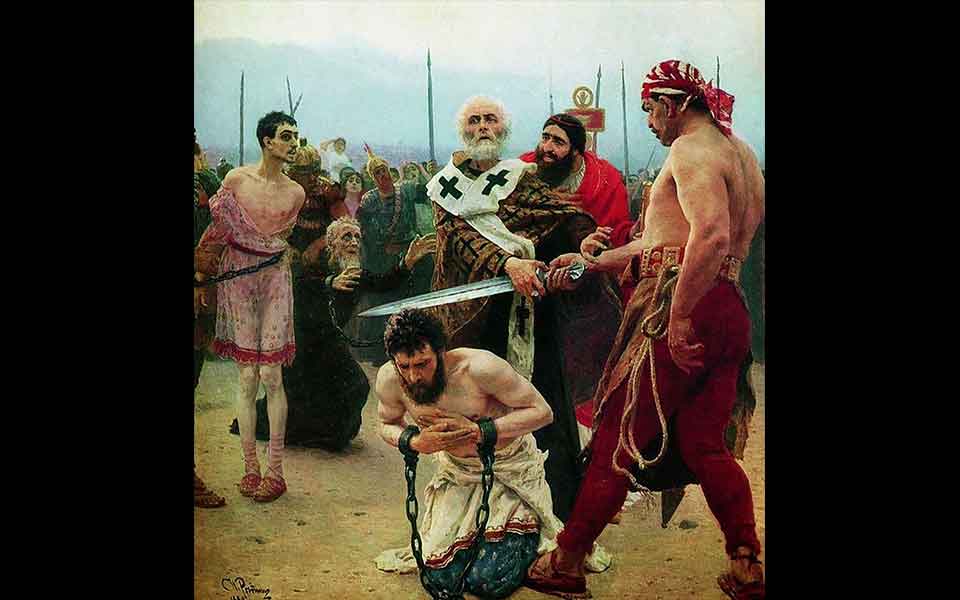
© Public domain
Repentant Thieves
While Nicholas’s acts of generosity and protection of seafarers became legendary, several stories concerning his life also highlight his compassion, forgiveness, and commitment to the redemption of those who had strayed from the path of righteousness, such as prostitutes and thieves.
One such story relates to a notorious thief, whom Nicholas, by now the Bishop of Myra in the Roman Diocese of Asia, offered guidance and counsel. Instead of condemning the man, he urged him to renounce his life of crime. The repentant thief, moved by Nicholas’ compassion and wisdom, heeded the bishop’s advice, eschewed his criminal ways and pursued a life of virtue.
This narrative reflects Saint Nicholas’ commitment to redemption and his belief in the transformative power of forgiveness. By extending his guidance to a repentant thief, Nicholas exemplified the Christian virtues of mercy and compassion, emphasizing the potential for positive change in individuals who genuinely seek repentance.
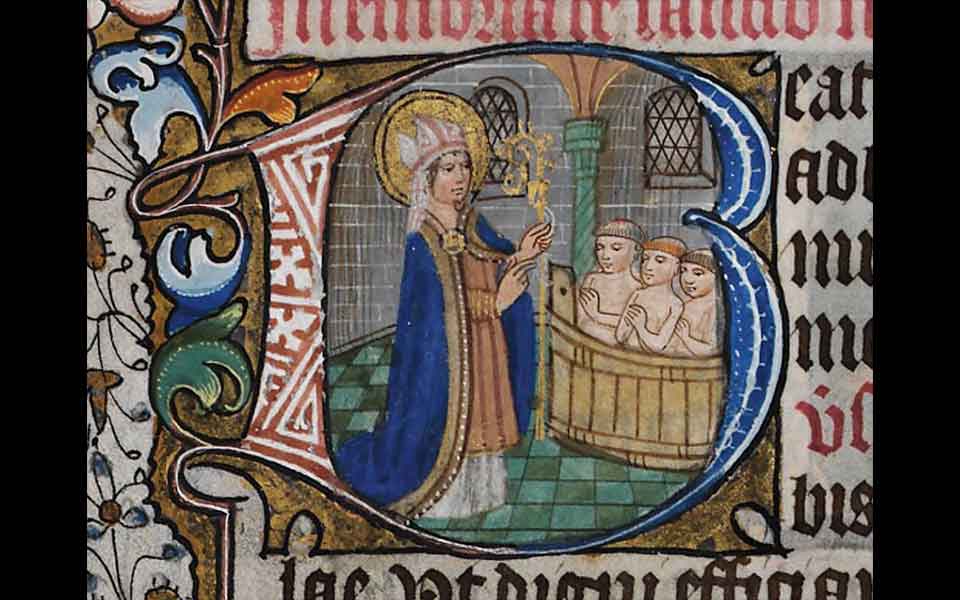
© Public domain
Protector of Children
Another famous story, likely originating in the later Middle Ages, relates to Saint Nicholas resurrecting three children from the dead. According to the legend, an evil butcher lured three young boys to his house during a famine, where he promptly murdered them with the intention of carving up and salting their bodies to sell as cured meat. Visiting the region in order to care for the hungry, Bishop Nicholas had a vivid dream of this dreadful crime, and confronted the butcher.
Upon finding the remains of the three boys in a salting tub, Nicholas earnestly prayed to God and made a Sign of the Cross, at which they were miraculously resurrected and made whole again.
The story is widely depicted in medieval Christian art, including stained glass windows, tapestries, and frescoes, and established Saint Nicholas as the patron and protector of children.
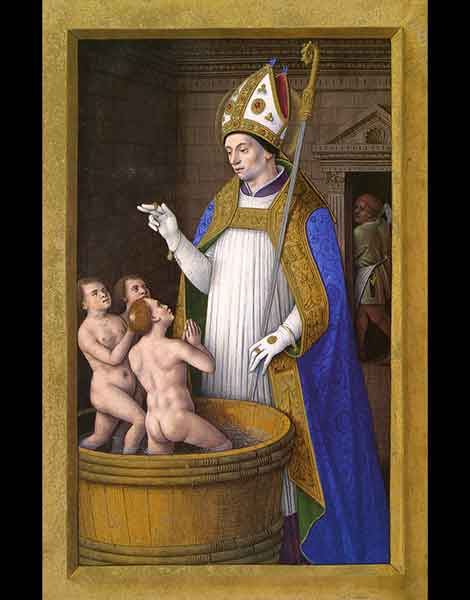
© Public domain
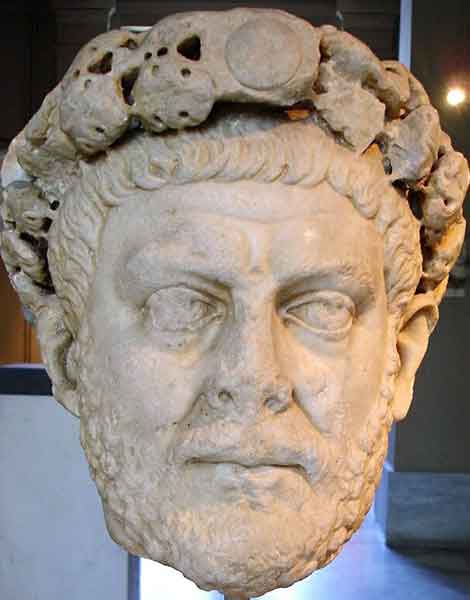
© Public domain
We know that the historical Saint Nicholas was an important leader in the early Christian church, who suffered torture and imprisonment during the ruthless Diocletianic Persecution (303-312) – named after the pagan emperor Diocletian – the Roman empire’s last, largest, and bloodiest persecution of Christians. Upon his release, he attended the First Council of Nicaea in 325, where he is said to have been a devout support of Trinitarianism, the central Christian doctrine of the Holy Trinity: God the Father, God the Son (Jesus Christ) and God the Holy Spirit.
He died on December 6th, 343, in Myra, and was buried in his cathedral church, where a rose-smelling liquid with healing powers, called “manna” or “myrrh,” is said to have formed at his grave site, fostering the growth of devotion to the beloved bishop.
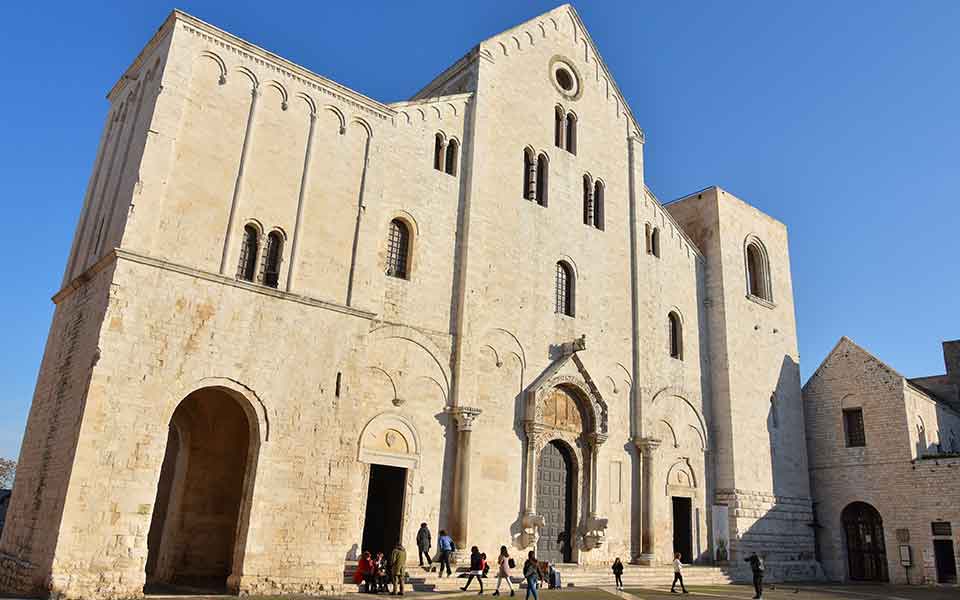
© Shutterstock
Growing Popularity
The spread of Christianity across Europe in the following centuries played a crucial role in popularizing the veneration of Saint Nicholas. The legends surrounding him took on local flavors and adaptations, contributing to the rich tapestry of his hagiography. In the Netherlands, for example, he became known as “Sinterklaas,” and his feast day on December 6th became a significant event marked by gift-giving.
The cult of Saint Nicholas flourished throughout the Middle Ages. The Crusaders, returning from the Holy Land, brought back stories of the beloved saint, further elevating his status, and numerous churches and cathedrals were dedicated to him.
One significant chapter in the history of Saint Nicholas involves the translation of his relics to Bari, southern Italy, in 1087. Concerned about the potential threat of Muslim conquest in Myra, Italian sailors embarked on a daring mission to steal the saint’s remains, much to the ire of the Greek Orthodox monks. The relics were transported to Bari, where a magnificent basilica, the Basilica di San Nicola, was constructed to house them. This event not only secured the relics but also contributed to the widespread veneration of Saint Nicholas in Western Europe.
The feast day of Saint Nicholas continued to be celebrated across Europe, with various customs and traditions associated with the saint. In some regions, people would leave shoes or stockings out on the eve of his feast day on December 6th, anticipating small gifts and treats. This custom evolved over time and became an integral part of the modern Santa Claus story.
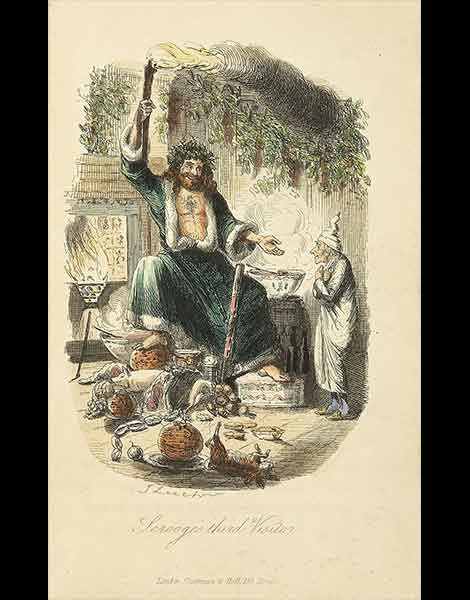
© Public domain

© Shutterstock
The Embodiment of Christmas Cheer
The transformation of Saint Nicholas into the familiar figure of Santa Claus was a gradual process that unfolded over centuries. The Dutch settlers in America, who brought their Sinterklaas traditions with them, played a crucial role in shaping the character. In the 19th century, the influence of the poem “A Visit from St. Nicholas” (commonly known as “The Night Before Christmas”) and illustrations by American cartoonist Thomas Nast (1840-1902) further solidified the modern image of Santa Claus — a jolly, rotund figure with a white beard, dressed in a red suit, and riding a sleigh pulled by reindeer.
Despite the evolution of the Santa Claus tradition, Saint Nicholas’s legacy as a symbol of kindness and generosity persists. His story, rooted in the historical and the legendary, continues to captivate people of all ages during the festive season. The Basilica di San Nicola in Bari remains a pilgrimage site for those seeking a connection with the saint, and the impact of his charitable deeds echoes through time, reminding us of the power of compassion and goodwill.












